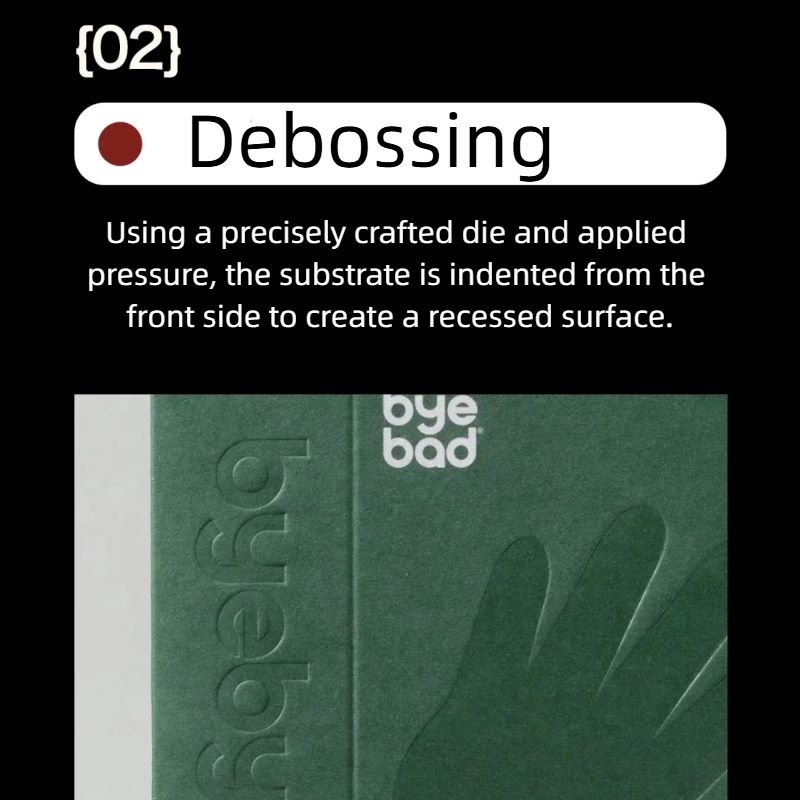

Debossing
Debossing is a specialty finishing technique that presses a design into a substrate, creating a recessed, indented effect. Unlike embossing (which raises surfaces), debossing adds subtle depth and sophistication through controlled depression.
Key Process Steps:
Die Preparation: A custom metal die (male) and counter-die (female) are precision-engraved.
Substrate Alignment: Material is secured between dies.
Pressure Application: High heat/pressure forces the die into the substrate, permanently indenting the design.
Result: A sunken, tactile graphic with shadow-play for understated elegance.
Applications & Use Cases
Luxury Packaging: Wine labels, cosmetic lids, premium gift boxes
Leather Goods: Branding on journals, wallets, belts
Stationery: Business cards, certificates, invitations
Industrial Design: Control panels, tactile indicators
Technical Considerations
| Factor | Details |
|---|---|
| Optimal Substrates | Thick materials (≥300gsm): soft-touch paper, leather, suede, chipboard. |
| Design Tips |
Use bold outlines (fine details may fill when indented).
Avoid narrow borders near edges (risk of tearing).
Pair with foil stamping for "debossed foil" contrast.
Variations |Blind Debossing: No added ink/foil (pure texture).
Color-Deboss: Ink applied inside the indentation.
Combined Effects: Deboss + emboss on opposing sides.
Why Choose Debossing?
Stealth Luxury: Creates refined texture without visual clutter.
Enhanced Usability: Indentations guide user interaction (e.g., braille, button cues).
Brand Memorability: Unique haptic experience elevates perceived value.
Durability: Recessed designs resist abrasion vs. raised elements.
Debossing vs. Embossing
| Debossing | Embossing |
|---|---|
| Recessed design | Raised design |
| Die presses into substrate | Die lifts substrate upward |
| Ideal for soft/thick materials | Works on wider material range |
| Minimalist, subtle effect | Bold, eye-catching presence |
Industry Example: Debossed logos on Apple product packaging convey premium minimalism, while Tiffany & Co. uses embossing for dramatic brand recognition.
Key Terminology:
Brass Dies: Best for deep, crisp debossing
Counter Force: Pressure from the reverse side
Beveled Edges: Slope-controlled indentation walls
Depth Control: Adjustable depression (0.3mm - 2.0mm)
Debossing transforms surfaces into tactile experiences, making it essential for high-end branding and functional design.